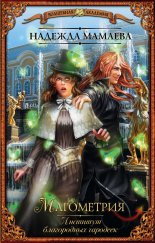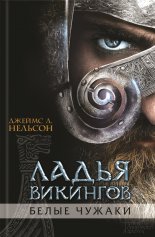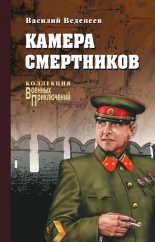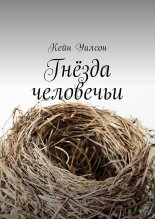Набоков в Америке. По дороге к «Лолите» Роупер Роберт
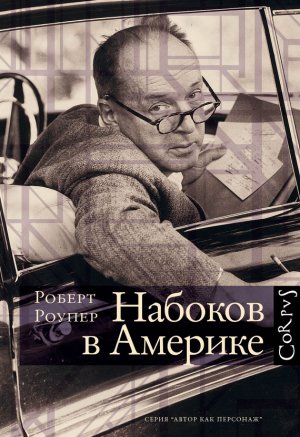
Херб Голд, который когда-то играл в теннис с Дмитрием Набоковым и вел после Владимира Набокова его занятия в Корнелле, поделился со мной очень интересными и смешными историями об отце и сыне. Ричард Баксбаум, которого Набоковы однажды летом взяли с собой в Юту в качестве второго водителя, рассказал, как это было – провести несколько недель в машине с таким семейством (если одним словом, то потрясающе).
Сотрудники коллекции Берга Нью-Йоркской публичной библиотеки, самого богатого в мире архива материалов, связанных с Набоковым, были неизменно доброжелательны ко мне: благодаря их любезности и профессионализму каждый визит в библиотеку приносил мне удовольствие, даже несмотря на то, что в главном читальном зале иногда стоял нестерпимый холод. Мне все-таки удалось найти то, что я искал, благодаря куратору Айзеку Гевиртцу и библиотекарям Бекки Файнер, Энн Гарнер и Линдси Барнс. Куратор отдела беспозвоночных Американского музея естественной истории Дэвид Гримальди помог мне понять, какую именно литературу по лепидоптерологии Набоков, скорее всего, читал в 1940-е годы. (Скорее таксономическую, а не теоретическую: теория Набокова не интересовала – во всяком случае, он не слышал о революционных идеях в популяционной генетике, которые появились в 1920-е годы и во многом сформировали современное отношение к теории эволюции.) Сьюзен Рэб Грин, также сотрудница Американского музея естественной истории, в красках рассказала мне об открытии, которое они сделали с доктором Гримальди: речь шла о коллекции насекомых, собранной Набоковым в 1941 году и переданной в музей, где она и пролежала в хранилище семьдесят лет. Эндрю Джонстон, научный сотрудник отдела чешуекрылых, помог мне выяснить, что еще Набоков передал в дар музею.
Роб Иствуд из гарвардского Музея сравнительной зоологии любезно уделил мне время несмотря на то, что я был далеко не первым в длинной веренице поклонников, интересовавшихся, где же работал Набоков, как выглядели его насекомые, у какого окна стоял его стол и тому подобное. Питер Маккарти, студент Гарварда и президент Гарвардского клуба альпинистов, ответил на мои вопросы о традициях клуба и сводил в конференц-зал в Клеверли-холле, где хранилось старое альпинистское снаряжение, лежали потрепанные журналы восхождений и царил дух братства.
Восстанавливая историю бегства Набоковых из Франции в Америку в 1940 году, я провел несколько дней в Исследовательском институте идиша в Нью-Йорке. Его главный архивариус Фрума Морер и сотрудники архива Гуннар Берг, Лео Гринбаум и Роберта Эллиотт помогли мне в исследованиях. Валерий Базаров, директор отдела семейной истории и определения местоположения ХИАС, рассказал о деятельности организации в начале Второй мировой войны и о том, какую роль она сыграла в бегстве Набоковых из Франции в США. Таня Чеботарева из Бахметьевского архива Колумбийского университета помогала мне с чтением русской переписки Набокова. Семен Белоковский перевел с русского на английский все необходимые мне документы, хотя я отредактировал английские варианты. Ольга Андреева-Карлайл, автор мемуаров и участница некоторых масштабных литературно-политических драм ХХ века, с присущей ей проницательностью и остроумием побеседовала со мной о неприязни Набокова к СССР в частности и к истории вообще. Сара Функе Батлер из нью-йоркского книжного магазина Glenn Horowitz Bookseller помогла мне найти принадлежавший Набокову экземпляр “Окна в Россию” Эдмунда Уилсона с недоуменными комментариями Набокова к замечаниям Уилсона о его, Набокова, карьере. Эйвери Роум, один из лучших редакторов, с кем мне доводилось работать, выслушала мои рассуждения и дала глубокие советы как по исследованию, так и по книге в целом. Мишель Дуаз, литературовед из Руана, узнал, сколько стоили Набоковым в 1940 году билеты на “Шамплен”. Для характеристики Дмитрия Набокова мне посчастливилось пообщаться с самыми близкими друзьями-американцами его юности – Барбарой Виктор, Сэнди Левином и Бреттом Шлезингером (все они живут в Нью-Йорке). Иван и Петр Набоковы, двоюродные братья Дмитрия, старшие сыновья Николая Набокова, помогли мне понять кое-какие аспекты разностороннего знакомства их семьи с Америкой. Их воспоминания о жизни и карьере стали для меня настоящим откровением.
Внимательные и квалифицированные сотрудники Хаутонской библиотеки Гарварда, библиотеки Бейнеке в Йеле и Библиотеки Конгресса любезно предоставили меня самому себе, и я в который раз почувствовал то же, что всегда чувствую в первый визит в подобные учреждения: какое все-таки счастье – быть гражданином открытого общества, в котором созданы все условия для сохранения письменной истории.
Моя мудрая жена, историк Мэри Райан, держала меня за руку, выслушивала мои жалобы, спорила со мной и, несмотря ни на что, верила, что у меня непременно получится написать о Набокове в Америке. Хочу поблагодарить и обнять ее. Мой уважаемый агент Майкл Карлайл, несокрушимый оптимист, неизменно меня ободрял и поддерживал. Антон Мюллер, мой редактор из Bloomsbury, и его коллега Рейчел Маннхаймер не раз успокаивали меня и помогали советом. Также хочу поблагодарить моих друзей, благодаря беседам с которыми даже такие проекты, как этот, со множеством тонкостей и сложностей, кажутся выполнимыми. Роберт Спертус и Пол Грубер, внимательные читатели и ученые мужи, которые при всей своей учености держатся на удивление скромно, очень мне помогли, равно как и Питер Джелавич, большой специалист по истории и культуре Германии. На мой взгляд, лучшие друзья – те, с кем можно говорить обо всем без утайки.
Источники иллюстраций
13 Каньон Литл-Коттонвуд, штат Юта. Фото автора.
39 Лайнер “Шамплен”. Фотограф неизвестен. C разрешения Heritage-Ships.
52 Эдмунд Уилсон. Фотограф неизвестен. С разрешения The Edmund Wilson Papers. Yale Collection of American Literature, Beinecke Rare Book and Manuscript Library, Yale University.
58 El Rey Court. Фото автора.
73 Долина Иосемити. Фотограф неизвестен.
89 Дом № 8 по Крейги-серкл. Фото автора.
91 Голубянки. Фото автора.
102 Алта-Лодж. Фотограф неизвестен. С разрешения Alan Engen и David Davenport.
105 Тропа на гору Лоун. Фото автора.
126 Письмо на бланке Колумбайн-Лодж. С разрешения Columbine Lodge stationery: Courtesy of the Bakhmeteff Archive of Russian & Eastern European Culture, Columbia University. Copyright The Estate of Vladimir Nabokov. Использовано с разрешения The Wylie Agency, L.L.C.
128 Пик Лонгс. С разрешения Allen Matheson.
131 Колумбайн-Лодж. Фото автора.
158 Открытка из Вайоминга. Фотограф неизвестен. С разрешения The Edmund Wilson Papers. Yale Collection of American Literature, Beinecke Rare Book and Manuscript Library, Yale University.
161 Роман из цикла о Кожаном Чулке, иллюстрация на обложке Carl Offterdinger.
162 Пик Разочарования. Фото автора.
176 Теллурид. Фото автора.
193 Дмитрий. Фотограф неизвестен. С разрешения Roger Boylan, Autosavant Magazine и Ariane Csonka.
197 Corral Log Motel. Фото автора.
200 Интерьер мотеля Corral Log. Фото автора.
242 Домик Мейнарда Диксона, Маунт-Кармел. Фото автора.
243 Интерьер домика Диксона. Фото автора.
245 В окрестностях Итаки. Carl Mydans для журнала Life. © Getty is.
254 Дмитрий. Фотограф неизвестен. С разрешения Roger Boylan, Autosavant Magazine и Ariane Csonka.
Библиография
Abrams, M. H., ed. The Norton Anthology of English Literature, vol. 2, 4th ed. New York: W.W. Norton and Co., 1979.
Adkins, Lynn. “Jesse L. Nusbaum and the Painted Desert in San Diego.” Journal of San Diego History 29, no. 2 (Spring 1983).
Agee, James. “The Great American Roadside.” Fortune 10 (September 1934): 53–63, 172, 174, 177.
Ahuja, Nitin. “Nabokov’s Case Against Natural Selection.” Tract, 2012. http://www.hcs.harvard.edu/tract/nabokov.html.
Alden, Peter D. “H.M. C. Climbing Camp, 1953.” Harvard Mountaineering, no. 12 (May 1955).
Alexander, Victoria N. “Nabokov, Teleology, and Insect Mimicry.” Nabokov Studies 7 (2002–2003): 177–213.
Alexandrov, Vladimir E. “Nabokov and Bely.” In Alexandrov. Garland Companion.
Alexandrov, Vladimir E. Nabokov’s Otherworld. Princeton, N. J.: Princeton University Press, 1991.
Alexandrov, Vladimir E., ed. The Garland Companion to Vladimir Nabokov. New York: Garland, 1995.
Altschuler, Glenn, Kramnick, Isaac. “«Red Cornell»: Cornell in the Cold War,” part 1. Cornell Alumni Magazine, July 2010.
Amis, Martin. “Divine Levity: The Reputation of Vladimir Nabokov Is High and Growing Higher and There Is Much More Work Still to Come.” Times Literary Supplement, December 23 and 30, 2011, 3–5.
Amis, Martin. “The Sublime and the Ridiculous: Nabokov’s Black Farces”. In Quennell. Vladimir Nabokov, His Life.
Amis, Martin. Visiting Mrs. Nabokov and Other Excursions. New York: Vintage International, 1995.
Appel, Alfred, Jr. “The Road to Lolita, or the Americanization of an migr.” Journal of Modern Literature 4 (1974): 3–31.
Appel, Alfred, Jr. Nabokov’s Dark Cinema. New York: Oxford University Press, 1974.
Appel, Alfred, Jr., ed. The Annotated Lolita. New York: McGraw-Hill, 1970.
Appel, Alfred, Jr., Newman, Charles, eds. Nabokov: Criticism, Reminiscences, Translations, and Tributes. London: Weidenfeld and Nicolson, 1971.
Bahr, Ehrhard. Weimar on the Pacific: German Exile Culture in Los Angeles and the Crisis of Modernism. Berkeley: University of California Press, 2007.
Baker, Nicholson. U and I: A True Story. New York: Vintage, 1992.
Banta, Martha. “Benjamin, Edgar, Humbert, and Jay.” Yale Review 60 (Summer 1971): 532–49.
Barabtarlo, Gennady. “Nabokov in the Wilson Archive.” Cycnos 10, no. 1 (1993): 27–32.
Barth, Werner, M.D., Segal, Kinim, M.D. “Reactive Arthritis (Reiter’s Syndrome).” American Family Physician 60, no. 2 (August 1, 1999): 499–503.
Belasco, Warren James. Americans on the Road: From Autocamp to Motel, 1910–1945. Cambridge, Mass.: MIT Press, 1979.
Benfey, Christopher. “Malcolm Cowley Was One of the Best Literary Tastemakers of the Twentieth Century. Why Were His Politics So Awful?” The New Republic, March 3, 2014.
Bentley, Eric. The Brecht Memoir. New York: PAJ Publications, 1985.
Berger, John. The Success and Failure of Picasso. New York: Pantheon, 1989.
Berkman, Sylvia. “Smothered Voices.” New York Times, September 21, 1958.
Bishop, Morris. “Nabokov at Cornell.” In Appel and Newman. Nabokov: Criticism. Bloom, Harold, ed. Herman Melville’s “Moby-Dick.” New York: Chelsea House, 1986.
Bishop, Morris. Vladimir Nabokov. New York: Chelsea House, 1987.
Booth, Wayne C. The Rhetoric of Fiction. Chicago: University of Chicago Press, 1983.
Borges, Jorge Luis. Labyrinths. New York: New Directions, 1964.
Boyd, Brian. “MSS.” In Alexandrov. Garland Companion.
Boyd, Brian. “Nabokov Lives On.” The American Scholar, Spring 2010.
Boyd, Brian. “The Psychologist.” The American Scholar, Autumn 2011.
Boyd, Brian. Stalking Nabokov: Selected Essays. New York: Columbia University Press, 2011.
Boyd, Brian. Vladimir Nabokov: The American Years. Princeton, N. J.: Princeton University Press, 1991.
Boyd, Brian. Vladimir Nabokov: The Russian Years. Princeton, N. J.: Princeton University Press, 1990.
Boyd, Brian, Pyle, Robert Michael, eds. Nabokov’s Butterflies: Unpublished and Uncollected Writings. Boston: Beacon Press, 2000.
Boyd, Brian, Edmunds, Jeff, Malikova, Maria, Toker, Leona. “Nabokov Studies: Strategic Development of the Field and Scholarly Cooperation.” In Leving. Goalkeeper.
Brodhead, Richard. “Trying All Things: An Introduction to Moby-Dick.” In New Essays on Moby-Dick, edited by Richard Brodhead. New York: Cambridge University Press, 1986.
Bruss, Elizabeth. “Illusions of Reality and the Reality of Illusions.” In Bloom. Vladimir Nabokov.
Buehrens, John. “Famous Consultant and Forgotten Minister.” UUWorld. http://www.uuworld.org/2004/01/lookingback.html.
Carlisle, Olga Andreyev. Under a New Sky: A Reunion with Russia. New York: Ticknor & Fields, 1993.
Castiglia, Christopher. Bound and Determined: Captivity, Culture-Crossing, and White Womanhood from Mary Rowlandson to Patty Hearst. Chicago: University of Chicago Press, 1996.
Chiasson, Dan. “Go Poets.” New York Review of Books, April 3, 2014.
Clinger, Mic, Pickering, James H., Stevanus, Carey. Estes Park and Rocky Mountain National Park Then and Now. Englewood, Colo.: Westcliffe, 2006.
Clippinger, David. “Lolita and 1950s American Culture.” In Kuzmanovich and Diment. Approaches to Teaching.
Cohen, Michael P. The Pathless Way: John Muir and American Wilderness. Madison: University of Wisconsin Press, 1984.
Connolly, Julian W. A Reader’s Guide to Nabokov’s “Lolita.” Boston: Academic Studies Press, 2009.
Connolly, Julian W., ed. Nabokov and His Fiction: New Perspectives. Cambridge, UK: University of Cambridge Press, 1999.
Connolly, Julian W. The Cambridge Companion to Vladimir Nabokov. New York: Cambridge University Press, 2005.
Corliss, Richard. Lolita. London: British Film Institute, 1994.
Corrsin, Stephen D. “Nabokov in America.” Columbia Literary Columns 33, no. 2, (February 1984): 22–31.
Couteau, Rob. “Abandoning Hope to Discover Life: Commemorating the 51st Anniversary of the Grove Press Edition of Henry Miller’s Tropic of Cancer, with a Special Tribute to Barney Rosset.” Rain Taxi Review, August 2012. http://www.raintaxi.com/abandoning-hope-to-discover-life.
Couteau, Rob. eview of Kerouac Ascending: Memorabilia of the Decade of “On the Road,” by Elbert Lenrow. Evergreen Review, Summer 2013.
Dabney, Lewis M. Edmund Wilson: A Life in Literature. Baltimore: Johns Hopkins University Press, 2007.
Davidson, James A. “Hitchcock/Nabokov: Some Thoughts on Alfred Hitchcock and Vladimir Nabokov.” Images. http://www.isjournal.com/issue03/features/ hitchnab1.htm and http://www.isjournal.com/issue03/features/hitchnab4.htm.
Davie, Donald. The Poems of Dr. Zhivago. New York: Barnes & Noble, 1965.
De Grazia, Edward. Girls Lean Back Everywhere: The Law of Obscenity and the Assault on Genius. New York: Random House, 1992.
Delbanco, Andrew. “American Literature: A Vanishing Subject?” Daedalus 135, no. 2 (Spring 2006): 22–37.
Davis, Dick. “Obituary: Janet Lewis.” The Independent, December 15, 1998.
Diment, Galya. “A Tale of Two Lolitas: Mrs. Parker and the Butterfly Effect.” New York, December 2, 2013.
Diment, Galya. “Two 1955 Lolitas: Vladimir Nabokov’s and Dorothy Parker’s.” Modernism/ Modernity 21, no. 2 (April 2014): 487–505.
Diment, Galya. A Russian Jew of Bloomsbury: The Life and Times of Samuel Koteliansky. Montreal: McGill – Queen’s University Press, 2011.
Diment, Galya. Pniniad: Vladimir Nabokov and Marc Szeftel. Seattle: University of Washington Press, 1997.
Dirig, Robert. “Karner Blue, Sing Your Purple Song.” American Butterflies, Spring 1997.
Dirig, Robert. “Theme in Blue: Vladimir Nabokov’s Endangered Butterfly.” In Shapiro. Nabokov at Cornell.
Dolinin, Alexander. “What Happened to Sally Horner? A Real-Life Source of Nabokov’s Lolita.” Times Literary Supplement, September 9, 2005, 11–12.
Douglas, Ann. “Day into Noir.” Vanity Fair, March 2007.
Douglas, Ann. Introduction to The Dharma Bums. New York: Viking, 2008.
Dragunoiu, Dana. Vladimir Nabokov and the Poetics of Liberalism. Evanston, Ill.: Northwestern University Press, 2011.
Dunn, Susan. 1940: FDR, Wilkie, Lindbergh, Hitler – the Election amid the Storm. New Haven, Conn.: Yale University Press, 2013.
Dupee, F. W. “«Lolita» in America.” Encounter XII, no. 2 (February 1959).
Dupee, F. “Introduction to Selections from Lolita.” Anchor Review 2 (1957): 1–3, 5–13.
Emerson, Ralph Waldo. The Spiritual Emerson. Edited by David M. Robinson. Boston: Beacon Press, 2003.
Epstein, Joseph. “Never Wise – But Oh, How Smart,” New York Times, August 31, 1986, section 7, p. 3.
Espey, John. “Classics on Cassette: «Speak, Memory.»” Los Angeles Times Book Review, October 20, 1991, 8.
Faulkner, William. Big Woods: The Hunting Stories. New York: Vintage International, 1994.
Federal Writers’ Project. The WPA Guide to New York City: The Federal Writers’ Project Guide to 1930s New York. Introduction by William H. Whyte. New York: The New Press, 1992. First published 1939 by Random House.
Fermi, Laura. Illustrious Immigrants: The Intellectual Migration from Europe, 1930—41. Chicago: University of Chicago Press, 1968.
Field, Andrew. Nabokov: His Life in Part. New York: Viking Press, 1977.
Field, Andrew. VN: The Life and Art of Vladimir Nabokov. New York: Crown, 1986.
Flanner, Janet. “Goethe in Hollywood, Parts I and II.” New Yorker, December 13 and 20, 1941.
Fleming, Donald, Bailyn, Bernard, eds. The Intellectual Migration: Europe and America, 1930–1960. Cambridge, Mass.: Belknap Press, 1969.
Fluck, Winfried. “Power Relations in the Novels of James: The «Liberal» and the «Radical» Version.” In Enacting History in Henry James: Narrative, Power, and Ethics, edited by Gert Buelens. New York: Cambridge University Press, 1997.
Foster, John Burt, Jr. “Bend Sinister.” In Alexandrov. Garland Companion.
Foster, John Burt, Jr. “Nabokov and Modernism.” In Connolly. Cambridge Companion.
Foster, John Burt, Jr. Nabokov’s Art of Memory and European Modernism. Princeton, N. J.: Princeton University Press, 1993.
Freeman, Elizabeth. “Honeymoon with a Stranger: Pedophiliac Picaresques from Poe to Nabokov.” American Literature 70, no. 4 (December 1998).
Frosch, Thomas R. “Parody and Authenticity in Lolita.” In Bloom, Vladimir Nabokov. Gerke, Sarah Bohl. “Bright Angel Cabins.” Arizona State University/Grand Canyon Association. http://grandcanyonhistory.clas.asu.edu/sites_southrim_brightangelcabins.html.
Gerschenkron, Alex. “A Manufactured Monument?” Modern Philology 63, no. 4 (May 1966): 336–347.
Gezari, Janet. “Chess and Chess Problems.” In Alexandrov. Garland Companion.
Gibian, George, and Stephen Jan Parker, eds. The Achievements of Vladimir Nabokov.
Ithaca, N. Y.: Cornell Center for International Studies, 1984.
Gilmore, Michael T. Twentieth Century Interpretations of “Moby-Dick.” Englewood Cliffs, N. J.: Prentice-Hall, 1977.
Gogol, Nikolai. Dead Souls, trans. Constance Garnett. New York: Modern Library, 1926.
Goldberg, J. J. “Kishinev 1903: The Birth of a Century.” The Jewish Daily Forward, April 4, 2003.
Goldman, Shalom. “Nabokov’s Minyan: A Study in Philo-Semitism.” Modern Judaism 25, no. 1 (2005): 1–22.
Goldstein, Richard. Helluva Town: The Story of New York City During World War II. New York: Free Press, 2010.
Green, Hannah. “Mister Nabokov.” The New Yorker, February 4, 1977.
Grimaldi, David, Engel, Michael S. Evolution of the Insects. New York: Cambridge University Press, 2005.
Grossman, Lev. “The Gay Nabokov.” Salon, May 17, 2000.
Guerney, Bernard Guilbert. “Great Grotesque.” New Republic, September 25, 1944. Haegert, John. “Artist in Exile: The Americanization of Humbert Humbert.” ELH 52, no. 3 (Fall 1985): 777–94.
Hagerty, Donald J. The Life of Maynard Dixon. Layton, Utah: Gibbs Smith, 2010.
Hall, Donald. “Ezra Pound Said Be a Publisher.” New York Times Book Review, August 23, 1981, 13, 22–23.
Hamsun, Knut.Pan. New York: Penguin, 1998.
Hardwick, Elizabeth. “Master Class.” New York Times Book Review, October 19, 1980, 1, 28.
Harris, Frank. My Life. New York: Frank Harris, 1925.
Haven, Cynthia. “The Lolita Question.” Stanford Magazine, May/June 2006.
Heaney, Thomas M. “The Call of the Open Road: Automobile Travel and Vacations in American Popular Culture, 1935–1960.” Doctoral dissertation, University of California, Irvine, 2000.
Heilbut, Anthony. Exiled in Paradise: German Refugee Artists and Intellectuals in America, from the 1930s to the Present. New York: Viking Press, 1983.
Hellman, Geoffrey T. “Black Tie and Cyanide Jar.” New Yorker, August 21, 1948, 32–47.
Ireland, Corydon. “Harvard Goes to War.” Harvard Gazette, November 10, 2011.
Isaac, Joel, Bell, Duncan, eds. Uncertain Empire: American History and the Idea of the Cold War. New York: Oxford University Press, 2012.
Jahoda, Marie. “The Migration of Psychoanalysis.” In Fleming and Bailyn. Intellectual Migration.
Jakle, John A., Sculle, Keith A., Rogers, Jefferson S. The Motel in America. Baltimore: Johns Hopkins University Press, 1996.
James, Clive. “The Poetry of Edmund Wilson.” The New Review 4, no. 44 (November 1977), 37–44.
Johnson, D. Barton. “Nabokov’s Golliwoggs: Lodi Reads English, 1899–1909.” Zembla. www.libraries.psu.edu/nabokov/dbjgo1.htm.
Johnson, D. Barton. “Nabokov’sHouse in Ashland.” Vladimir Nabokov Forum, Listserv.UCSB.edu, n. d. https://listserv.ucsb.edu/lsv-cgi-bin/wa?A2=ind9910&L= NABOKV–L&P=R348&1.
Johnson, D. Barton. “Strange Bedfellows: Ayn Rand and Vladimir Nabokov.” Journal of Ayn Rand Studies 2, no. 1 (Fall 2000): 47–67.
Johnson, D. Barton. “Vladimir Nabokov and Captain Mayne Reid.” Cycnos 10, no. 1 (1992).
Johnson, D. Barton, and Sheila Golburgh Johnson. “Nabokov in Ashland, Oregon.” Penn State University Libraries, n. d. http://www.libraries.psu.edu/nabokov/dbjas1.htm.
Johnson, Kurt, Coates, Steve. Nabokov’s Blues: The Scientific Odyssey of a Literary Genius. Cambridge, Mass.: Zoland Books, 1999.
Jordy, William H. “The Aftermath of the Bauhaus in America: Gropius, Mies, and Breuer.” In Fleming and Bailyn. Intellectual Migration.
Judge, Edward H. Easter in Kishinev: Anatomy of a Pogrom. New York: New York University Press, 1992.
Kakutani, Michiko. “The Lasting Power of Dr. King’s Speech.” New York Times, August 28, 2013, A1, A18.
Karl, Frederick R. Franz Kafka, Representative Man. New York: Ticknor & Fields, 1991.
Karlinsky, Simon. “Nabokov’s Russian Games.” In Roth. Critical Essays.
Karlinsky, Simon, ed. Dear Bunny, Dear Volodya: The Nabokov-Wilson Letters, 1940–1971, annotated and with introductory essay by Karlinsky. Berkeley: University of California Press, 2001.
Kelly, Aileen. “Getting Isaiah Berlin Wrong.” New York Review of Books, June 20, 2013.
Kernan, Alvin. “Reading Zemblan: The Audience Disappears in Pale Fire.” In Bloom. Vladimir Nabokov.
Kerouac, Jack. On the Road. New York: Penguin, 1976. First published 1957 by Viking Press.
Kerouac, Jack. The Dharma Bums. New York: Viking, 2008. First published 1958 by Viking Press. Khrushcheva, Nina L. Imagining Nabokov: Russia Between Art and Politics. New Haven, Conn.: Yale University Press, 2007.
Kopper, John M. “Correspondence.” In Alexandrov. Garland Companion.
Kuzmanovich, Zoran. “Strong Points and Nerve Points: Nabokov’s Life and Art.” In Connolly, Cambridge Companion.
Kuzmanovich, Zoran, Diment, Galya, eds. Approaches to Teaching Nabokov’s “Lolita.” New York: Modern Language Association of America, 2008.
Larmour, David H.J., ed. Discourse and Ideology in Nabokov’s Prose. New York: Routledge, 2002.
Laskin, David. “When Weimar Luminaries Went West Coast.” New York Times, October 3, 2008.
Lawrence, D.H. Propos of “Lady Chatterley’s Lover” and Other Essays. London: Penguin, 1961.
Lawrence, D.H. Studies in Classic American Literature. Edited by Ezra Greenspan, Lindeth Vasey, and John Worthen. New York: Cambridge University Press, 2003. First published 1923 by Thomas Seltzer.
Leamer, Laurence. Ascent: The Spiritual and Physical Quest of Willi Unsoeld. New York: Simon & Schuster, 1982.
Levin, Harry. “Two Romanisten in America: Spitzer and Auerbach.” In Fleming and Bailyn. Intellectual Migration.
Leving, Yuri. “«The Book Is Dazzlingly Brilliant… But» – Two Early Internal Reviews of Nabokov’s The Gift.” In Leving. Goalkeeper.
Leving, Yuri.. “Selling Nabokov: An Interview with Nikki Smith.” Nabokov Online Journal 7 (2013). http://www.nabokovonline.com.
Leving, Yuri, ed. The Goalkeeper: The Nabokov Almanac. Boston: Academic Studies Press, 2010.
Lilly, Mark. “Nabokov: Homo Ludens.” In Quennell. Vladimir Nabokov, His Life.
Lock, Charles. “Transparent Things and Opaque Words.” In Nabokov’s World, Vol. 1: The Shape of Nabokov’s World, edited by Jane Grayson, Arnold McMillin, and Priscilla Meyer. London: Palgrave, 2002.
Lodge, David. “Exiles in a Small World.” The Guardian, May 7, 2004.
Maar, Michael. Speak, Nabokov. Translated by Ross Benjamin. New York: Verso, 2009.
Mahaffey, Vicki, Laity, Cassandra. “Modernist Theory and Criticism.” The Johns Hopkins Guide to Literary Theory & Criticism, 2nd ed., edited by Michael Groden and Martin Kreiswirth. Baltimore: Johns Hopkins University Press, 2005.
Manolescu-Oancea, Monica. “Inventing and Naming America: Place and Place Names in Vladimir Nabokov’s Lolita.” European Journal of American Studies I (2009).
McCarthy, Mary. “F.W. Dupee, 1904–1979.” New York Review of Books, March 8, 1979.
McCarthy, Mary. “On F.W. Dupee (1904–1979).” New York Review of Books, October 27, 1983.
McCrum, Robert. “The Final Twist in Nabokov’s Untold Story.” The Observer, October 24, 2009.
McGill, Meredith L. American Literature and the Culture of Reprinting, 1834–1853. Philadelphia: University of Pennsylvania Press, 2003.
McKinney, Jerome B., Howard, Lawrence Cabot. Public Administration: Balancing Power and Accountability. Westport, Conn.: Praeger, 1998.
Melville, Herman. Moby-Dick, or The Whale. Evanston, Ill.: Northwestern University Press, 2001. First published 1851 by Harper & Brothers.
Meyer, Priscilla. “Nabokov’s Critics: A Review Article.” Modern Philology 91, no. 3 (1994): 326–38.
Meyers, Jeffrey. Edmund Wilson: A Biography. Boston: Houghton Mifflin, 1995.
Miosz, Czesaw. Emperor of the Earth: Modes of Eccentric Vision. Berkeley: University of California Press, 1977.
Minchenok, Dmitry. “Dmitry Nabokov. Life Like Fiction,” interview. Voice of Russia, February 28, 2012. Recorded in 2005. http://sputniknews.com/voiceofrus sia/2012_02_28/67099376.
Mizruchi, Susan. “Lolita in History.” American Literature 75, no. 3 (September 2003).
Moynahan, Julian. “Lolita and Related Memories.” In Appel and Newman. Nabokov: Criticism.
Mizruchi, Susan. Vladimir Nabokov. Minneapolis: University of Minnesota Press, 1971.
Myers, Steven Lee. “Time to Come Home, Zhivago,” New York Times, February 12, 2006.
Nabokov, Dmitri. “A Few Things That Must Be Said on Behalf of Vladimir Nabokov.” In Rivers and Nicol. Nabokov’s Fifth Arc.
Nabokov, Dmitri. “Close Calls and Fulfilled Dreams: Selected Entries from a Private Journal.” In Our Private Lives, edited by Daniel Halpern. Hopewell, N. J.: Ecco Press, 1998.
Nabokov, Dmitri. “On a Book Enh2d The Enchanter.” In V. Nabokov, The Enchanter, 97–127.
Nabokov, Dmitri. “On Returning to Ithaca.” In Shapiro, Nabokov at Cornell, 277–84.

